ST. JOSEPH’S HOSPITAL, BUCKHANNON, W.V.
Father Nicholas Hengers, who had guided the Sisters to Richwood, was transferred to Buckhannon in 1920. Father expressed the need of a hospital there.
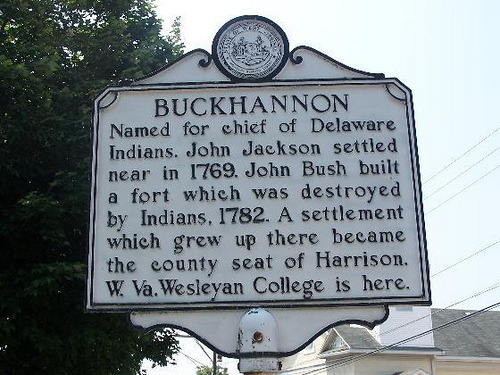
Charles L. Barlow purchased the land where the hospital is located in the late 1890’s. He and his wife, Margaret {Poundstone} Barlow lived in the beautiful old mansion with their only son, Wilson Palmer Barlow. Mr. Barlow died of stomach cancer in 1914, and his wife and son continued to live in the mansion. Wilson P. Barlow was a broker for the bank, and around 1921 he was threatened by blackmail. The story has been told that the life of his son was threatened, but research shows that he and his wife Alice {Allen} Barlow had only one son, Wilson Barlow, who was born in 1925, and the family was still living on Main Street in Buckhannon in the 1930 census. Perhaps it was Charles’s son, Wilson P. whose life was in danger.
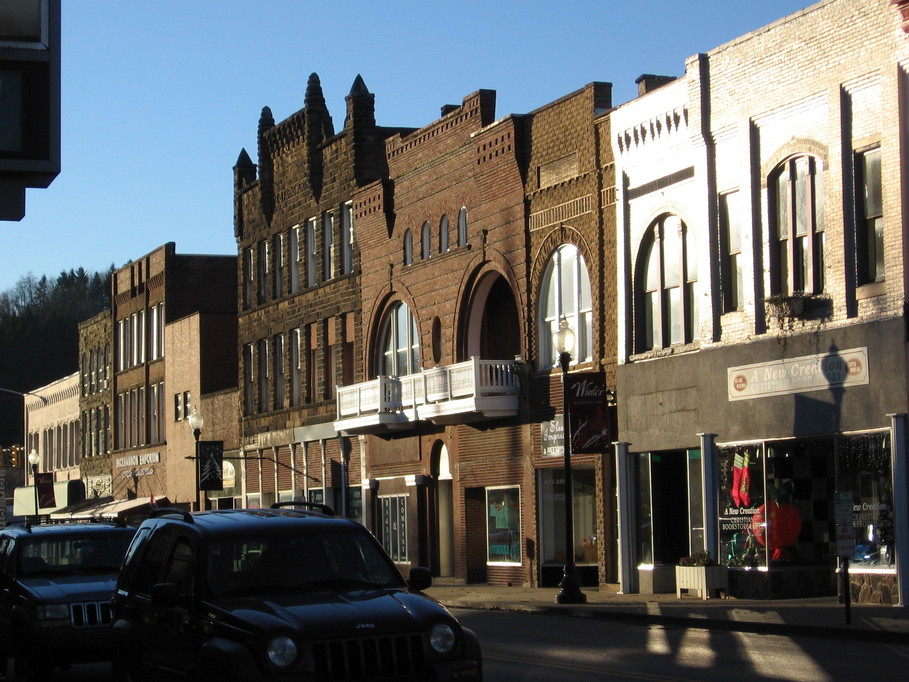
Main Street in Buckhannon
The acreage was purchased for $27,000 by Bishop P.J. Donahue, Trustee, in 1921 from Wilson Palmer, his wife, Alice {Allen} Barlow, and Mary {Poundstone} Barlow, widow of Charles L. Barlow.
Sisters Alacoque Raedeker, Priska Hess, and Igantia Havers were the first Pallottines to arrive, with Sr. Longina Biermann coming a little later.
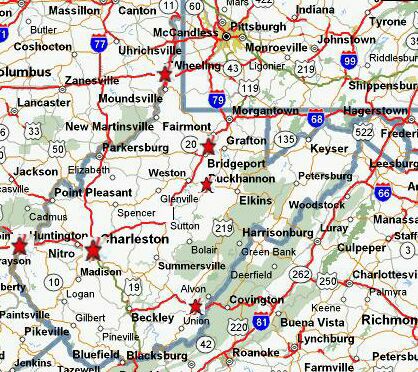
The mansion was small for a hospital, and on opening day “there was nothing at the hospital”. Not even a bed that was their own. No tables or chairs. They had orange crates. They ate on them, and they sat on them. A doctor gave the Sisters beds for the first night. Patients were to come, and Sr. Alacoque had great confidence and hope. She said, IF WE HAVE ONE PAYING PATIENT, WE CAN MAKE IT. – They started out with ONE paying patient!
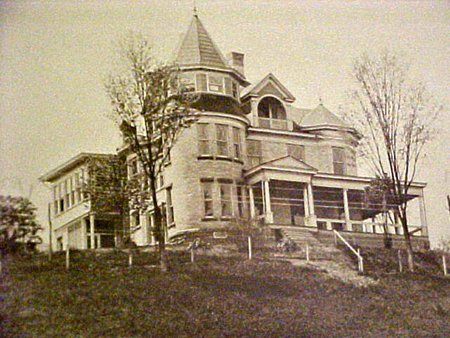
St. Joseph’s Hospital in 1921
Since they had 6-8 acres of land, Sr. Longina, who was a farmer’s daughter, planned to plant a garden in the spring and therefore they could grow their own vegetables. She knew farming, and was an excellent cook.” (Sr. Ludwiga Adler, “Memoirs”)
The land was developed into a fine farm, complete with fruit trees.
The cows, Brownie, Bessie, Pearl, and Daisy were acquired in 1921. For some years St. Joseph had its own dairy, with milk bottles with St. Joseph’s Hospital printed on them.
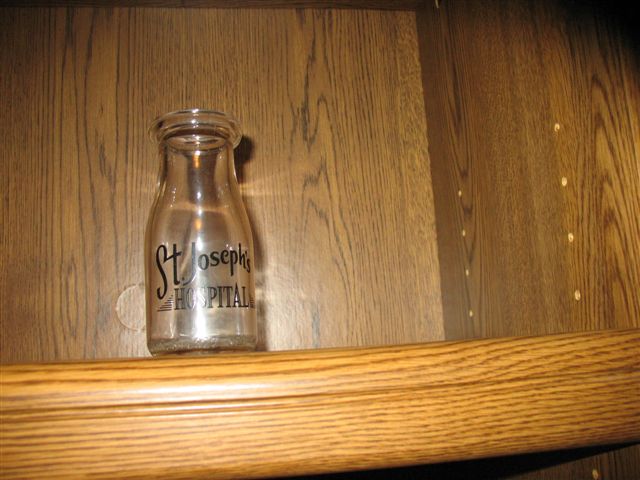
Original “St. Joseph’s” bottle
The older sisters liked to laugh at the story of how the pigs escaped their pen, and went downtown to the courthouse, causing havoc for the Sisters and Fr. Hengers!
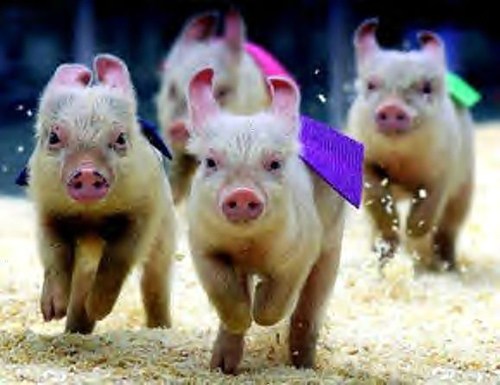
Runaways
Somewhat later they built a new red brick barn, and added chicken coops, a smoke house, and small housing units for the farm workers. When pasteurized milk became a requirement, government restrictions forced the farm to close.
On the finer side of life, the farm also had a grotto of the blessed mother, and a lovely fish pond. It is said that in the old hospital the Sisters had a bird cage on the landing of the staircase: A touch of beauty for the suffering patients to enjoy.
Years later Sr. Carola Jehle wrote, “The Sisters gladly spent long hours at hard work for the institution and thus promoted the cause of Christ.”
In 1929, six girls began nurses training with the doctors giving instructions. This program was later discontinued due to cost.
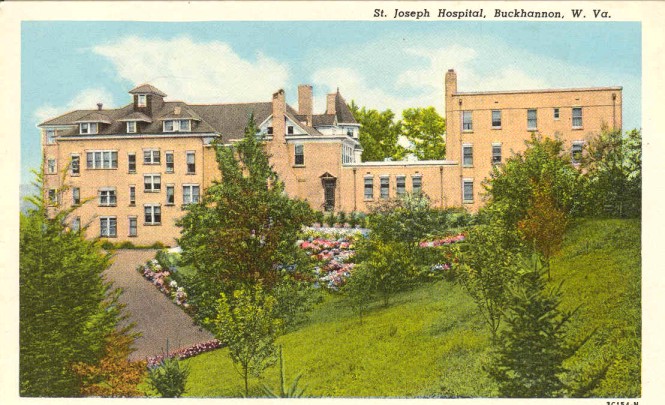
St. Joseph’s Hospital, Buckhannon, ~1939
The hospital has gone through several additions, and is constantly being updated by adding new programs. Sisters Amalia Bauer and Mary Herbert Netwig were the two administrators who lead the hospital for many years. The road leading to the hospital is called Amalia Drive, in her honor. Both of these women were totally dedicated to the growth of St. Joseph’s Hospital, although many other sisters labored there over the years, making St. Joseph’s a fine small hospital.
Sr. Heriberta Trella worked long years at St. Joseph’s, nursing the new mothers and their babies. The “preemies” were her specialty. She gave them tiny drops of whiskey with their milk! St. Joseph’s had an excellent reputation for the survival of prematurely born infants during the time she cared for them.
Several Sisters are at rest in the little cemetery on the hill above the hospital: Sisters Alacoque Radeker, M. Anastasia Raker, Longina Biermann, Scholastica Urban, and Kosta Hausen. All except Sr. Kosta died in Buckhannon.
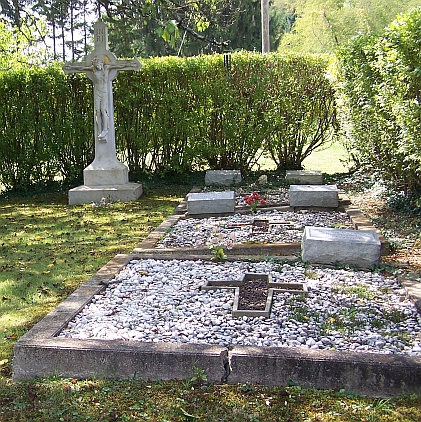
A benefactor of the hospital, Mrs. Mary A. Mullooly, who donated funds for an elevator, is also buried there, at her request.
A statue, “Our Lord Mocked After The Scourging,” sits in the right hand corner, near the cemetery gate. It, too, has a history.
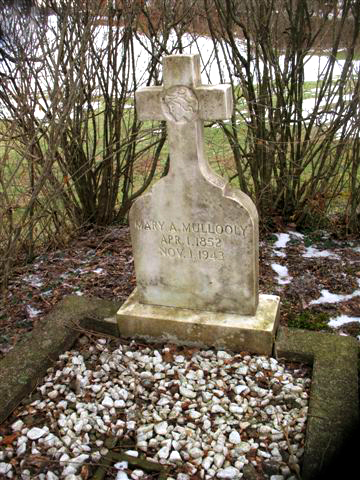
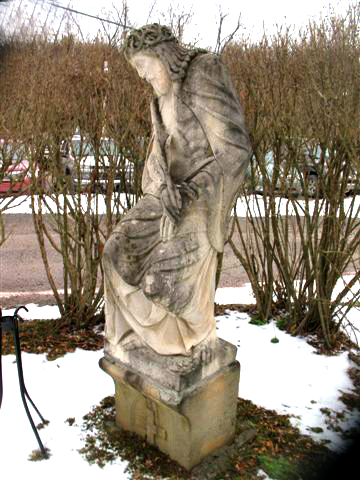
1. The grave of Mary A. Mullooly 2. Our Lord Mocked After The Scourging
In 1940, eight convicts drank anti-freeze, thinking it was liquor. They were brought to the hospital, where five of them died. The Superintendent of the Camp ordered a shrine built. They donated the men for the work, and the grayish limestone for the statue. It was a way of thanking the Sisters for their care of the prisoners.
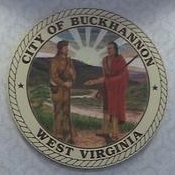
The heraldry of Buckhannon
From a humble beginning, St. Joseph’s Hospital had developed into a lovely up-to-date facility. Little traces of the past remain. The farm is long gone, as is the old hospital.
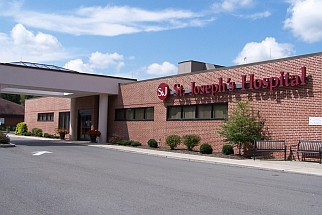
St. Joseph’s Hospital, 2008
The Sisters now reside in a convent built in 1992 on the foundations of the original hospital, with the former convent serving as a resource center.
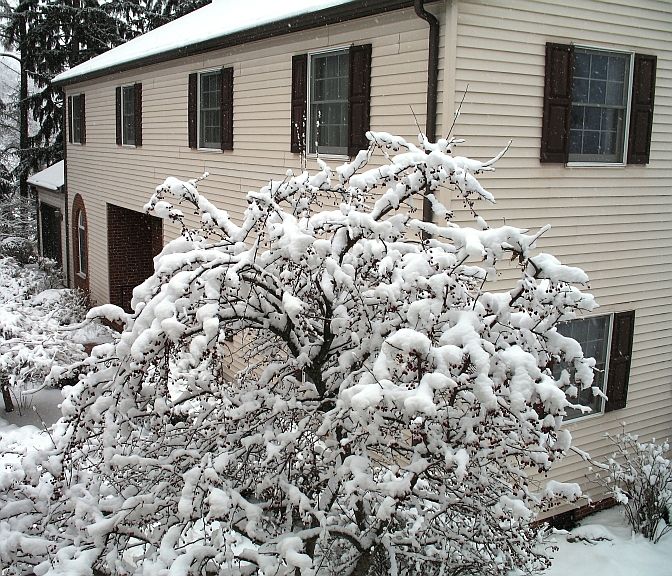
The Convent in winter time, 2011 (photo by Sr. Francesca Lowis, SAC)
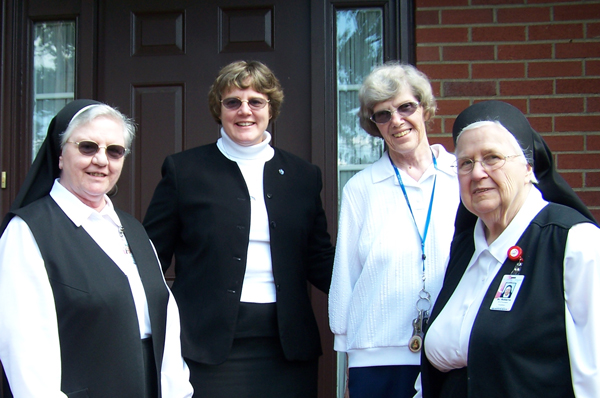
A hospitable home. Guests and residents. L to R: Srs. Francesca Lowis, Gail Borgmeyer, Phyllis Carpenter and Roberta Frohnapfel
________________
Photo: General and Provincial Archives
Postcard of St. Joseph’s Hospital: www.lindapages.com/nurses/nurses-schools.htm
__________________________________________
ONE OF THE ORIGINAL
ST. JOSEPH’S NURSES
REMEMBERS THE GOOD OLE DAYS
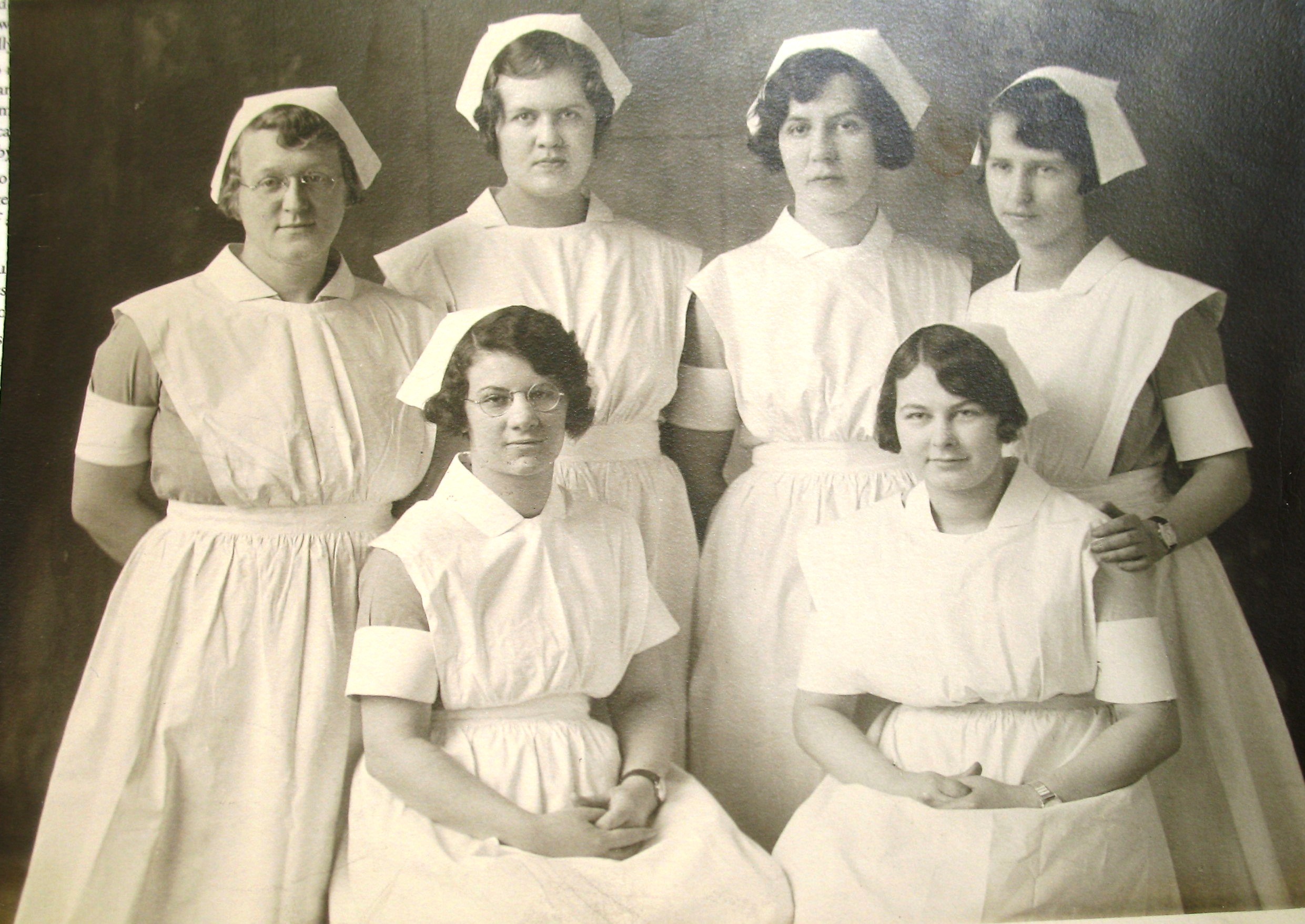
Pictured from left to right: Front row: Margaret Maurer, Agnes McNeil
Back row: Bess Walsh, Grace Hyatt, Ruth Ball, Catherine Marie Douglas
Buckhannon, WV–“We worked in the day, and the doctors gave us our classes at night.” That’s how one of the first nurses at St. Joseph’s Hospital of Buckhannon remembers her career of taking care of others for a living. Catherine Marie Douglas, R.N. says she began her nursing training at the little hospital on the hill in 1930. “I worked as a nurse for thirteen years until 1943 when I married my husband, Melvin James Snyder.”
“We worked from seven a.m. until three p.m. and then took our night classes, but since we lived on the tower, we had to be on-call 24 hours a day for things like surgeries and babies. You had to be dedicated.”
The 90 year old (as of 2001) Tennerton woman says the nurses even had to wash dishes. “We were not allowed in the kitchen to cook. The Sisters did that. They made fried potatoes, pies, and good German recipes.”
The nurses worked night duty while we took classes. “Sister Antonio, Sister Sixta, and the other sisters all did their part. Sister Longina raised vegetables and slaughtered cows for food. She also spent time after lunch mending clothes. I still have a scarf Sr. Longina crocheted. We had a fish pond on the land, goldfish on every floor, and a parakeet on the tower.”
Snyder not only has fond memories of the sisters, but also of the doctors. “Dr. Pifer would come in smoking a pipe and lay it down. Dr. Simons saw cases of typhoid fever. He and Dr. Pifer fed their patients. Dr. Basil Page did not, but he knew everything and never had to ask for anything. Dr. Page was also quick and could do an appendix in fifteen minutes. Dr. Huffman had to treat someone once with botchelism…the first and only case I remember. He also treated a woman with pneumonia and heart problems; she had to have a c-section to have two babies.”
Speaking of new babies, Snyder says they had their share of newborns during her time at St. Joseph’s. “The babies and the mothers had to stay five to ten days back then. We would put ribbons on the newborns. The babies had to have drops of silver nitrate and doses of castor oil and orange juice (it was named a cocktail). People still meet me on the street and tell me I helped the doctor who delivered them or their babies.”
She says there were usually eight patients and a staff of twenty, who all stayed on the tower together. “We had to boil all of the instruments, make our own dressings, and even make our own ivs. We used litmus paper for urine tests in the lab. We were busy and there wasn’t any time for anything else, but I loved it. We had to take complete care of our patients. I’d do anything to get it back.”
While the duties of nurses have changed since her time as one, she says the appearance of nurses has too. “We had to be very professional and wear long, white dresses with aprons and stockings. Our uniforms had to be starched and pressed, and our hair had to be under our caps.”
Nurses at St. Joseph’s Hospital in the 1930’s made about $40 a month, according to Snyder. “We paid $1 a month for room and board. We used the rest of our money to buy things we needed like shoes, stockings, books, and to hire someone to make us uniforms. The girls in the lab got ten cents to iron a uniform.”
Snyder says the nurses also had an opportunity to earn overtime occasionally. “Sister Anastasia would let us earn extra money if we stayed longer. We were off at three p.m., but if we came back to work from eight p.m. to around midnight, we could get more pay to help care for extra sick patients.”
When she returned as a patient at St. Joseph’s Hospital of Buckhannon in 2001, Snyder said, “St. Joseph’s is the only hospital there is!” When asked how she felt about being a nurse, she said, “It does make you feel good!”
###
Interview by Annette Barnette (2001)


